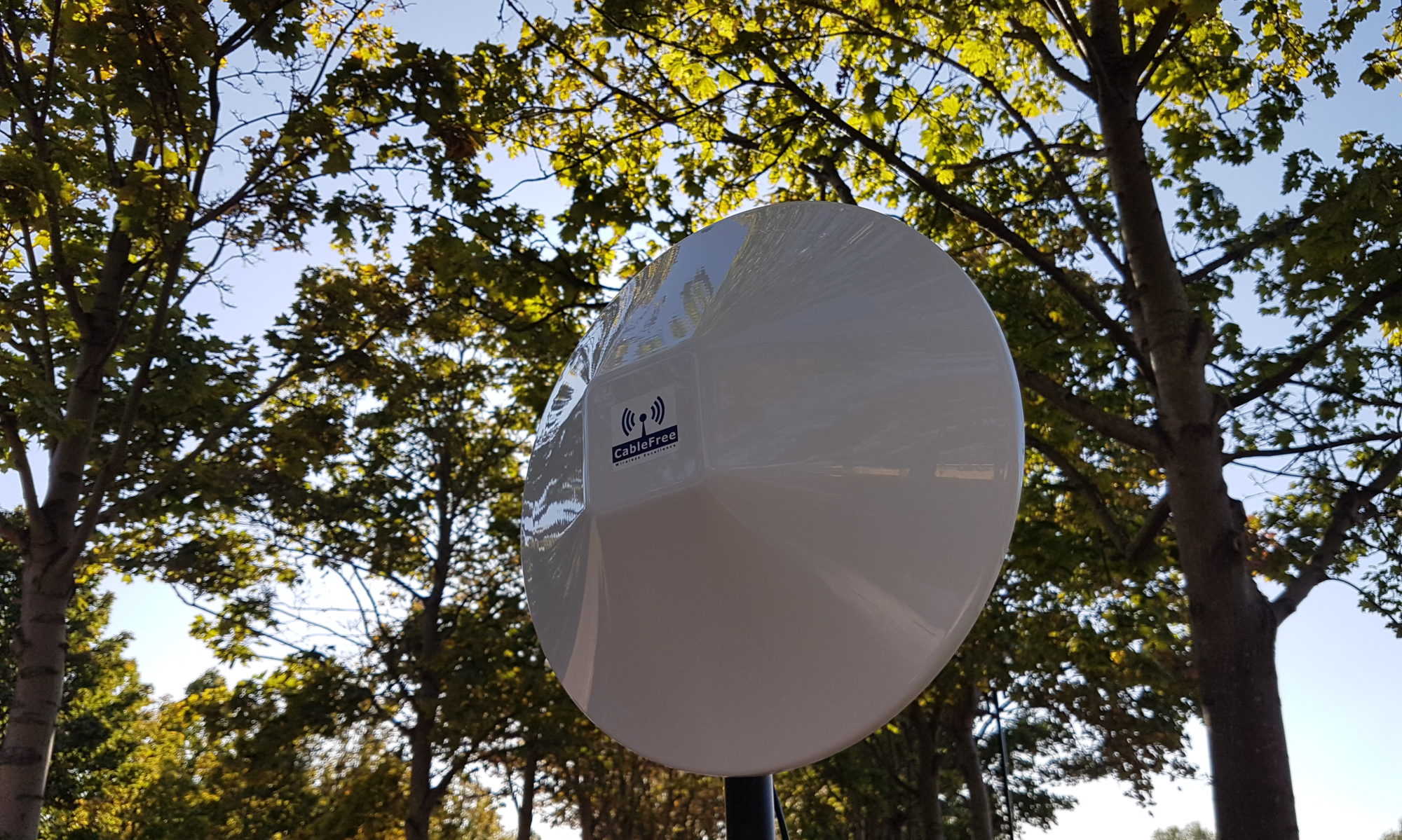Regulation of the 60GHz V-band
Regulation of V-band (60 GHz) varies globally. Check regional regulation before planning a V-band 60GHz network. Key regulation includes EC (Europe) & FCC (USA). Note that within Europe, individual member states may have different interpretation of rules.
V-band Summary
The V-band ostensibly ranges from the 41 GHz to the 75 GHz band. Parts of that band of spectrum are used for millimeter wave radar and various scientific applications. The 60 GHz band has been attracting considerable interest recently. Compared to only 70 MHz spectrum available in the 2.4 GHz band and 500 MHz in the 5GHz band for Wi-Fi, there is 7 GHz available in 60 GHz V-band. They are well suited to high-capacity, short-hop (<2 km) communications with narrow beams. The Wi- Fi 802.11ad low-power, very short-range devices will operate in the 60 GHz band, potentially offering data throughputs of up to 10 Gbps

EC 60 GHz Rule Change
In late 2013, the European Commission (EC) issued a decision, the 2013/752/EU, that made a number of amendments to a prior policy document (2006/771/ EC). The main objective of the revised policy document is to constrain transmission power levels to ensure they do not interfere with other wireless equipment. In the case of the short-range devices operating in the 57 GHz to 66 GHz band, they are restricted to 40 dBm Equivalent Isotropically Radiated Power (EIRP) and 13 dBm/MHz EIRP densities. Fixed outdoor installations are excluded from complying with these restrictions. Furthermore, it will ensure that these short-range devices do not become a serious source of interference for backhaul links in the 57 GHz to 64 GHz band.
FCC 60 GHz Rule Change
In late 2013, the FCC voted unanimously to change the rules governing the 60 GHz unlicensed band and said that the new raised power levels would improve the use of unlicensed spectrum for high- capacity, short range outdoor backhaul, which is particularly useful for small cells. There are several reasons why this rule change was important for small cell backhaul. In the 60 GHz band, wireless transmissions are attenuated by oxygen absorption and moisture or “rain fade,” which limits their range; also, the signal will not penetrate foliage or buildings, requiring a clear LoS. At this high frequency, the antenna is a small dish that matches the small form factor of the small cell and can be installed unobtrusively outdoors.
The FCC raised the power limit for outdoor links operating in the 57 GHz to 64 GHz band on an unlicensed basis. The EIRP limit was raised from 40 dBm (equivalent to 10 Watts) to a maximum of 82 dBm (158,489 Watts), depending on how high the antenna gain is. The new power limit is comparable to others the FCC has in the fixed microwave services.
The FCC believes this will support higher-capacity outdoor links, such as small cells, extending to about 1 mile (1.6 km). The FCC also eliminated the need for outdoor 60 GHz devices to transmit an identifier. Indoor 60 GHz devices (for example, those based on WiGig’s 802.11ad standard) are still constrained to the much lower power limitations, which prevents interference with outdoor fixed link devices.
Europe
In Europe, the European Telecommunication Standards Institute ( ETSI) and the European Conference of Postal and Telecommunication ( CEPT ) adopted some general recommendations for operation of devices in the 57-66 GHz band. The CEPT recommendation REC (09)01, which was supplemented by ETSI EN 302 217 harmonised standard, calls for a maximum EIRP power level of +55 dBmi, but typically limits maximum conducted power to +10 dBm and the minimum antenna gain to +30dBi. This approach does not allow the trade-off of Executive Summary 1 Regulatory Background antenna gain and power in the way that the more flexible U.S. standard does.
United Kingdom (UK)
In 2010 the UK Office of Communications (OFCOM) approved the unlicensed use of the 57…64 GHz spectrum. Although the spectrum allocation follows the FCC standard (maximum EIRP of +55 dBm), the maximum conducted power of +10 dBm and the +30 dBi minimum antenna gain is modelled after the European ETSI standard”
For Further Information
Please Contact Us


